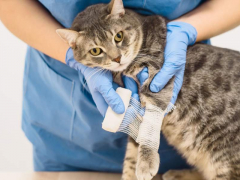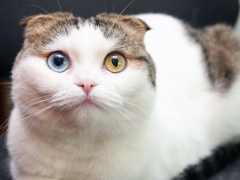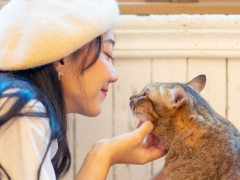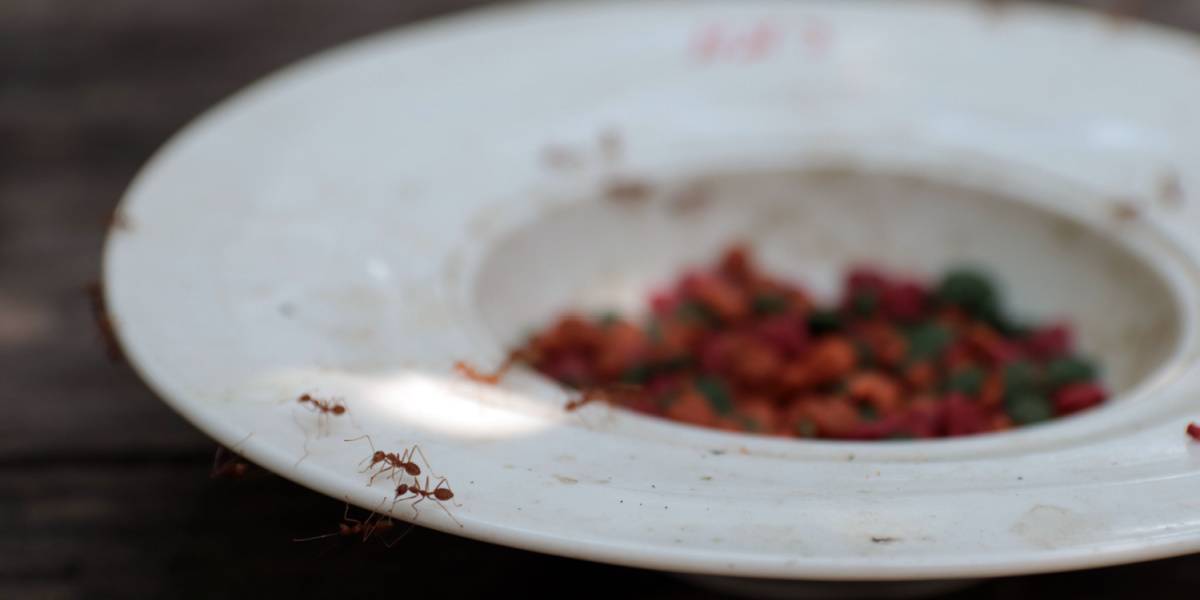
With more than 12,000 species of ant worldwide, their accolade as being the longest-living insect species, and the fact that they exist on every continent except Antarctica … well, there are a lot of ants around. And every single one of them seems to want to eat your pet’s food.
If you have an ant infestation, you’re not alone. But before you contact pest control to seek out the offending ant colony, you can try some DIY home remedies. Check out our top 10 methods, including a pet food moat, lemon juice, petroleum jelly, and peppermint oil. We’ve compiled the best natural ways to send these pesky critters straight back to their anthills.
How To Get Rid of Ants
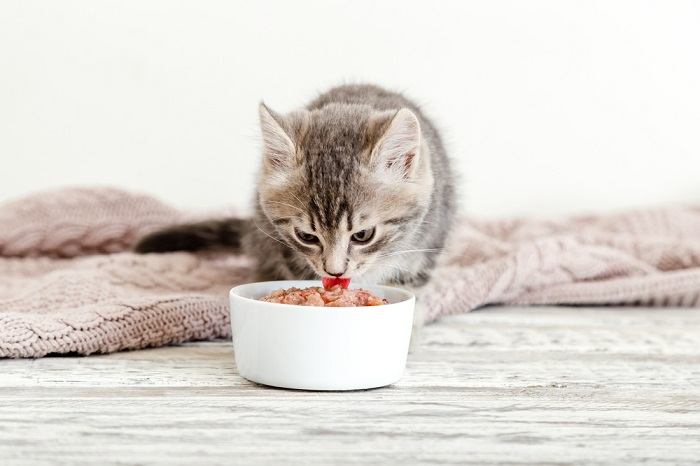
It’s important to keep ants out of your cat’s food so these insects don’t take over.
Some ant fighting measures focus on keeping the food physically unavailable to the ants, and others involve repelling the pests. Read on for our top 10 methods to combat an ant problem:
1. Lock Food Away
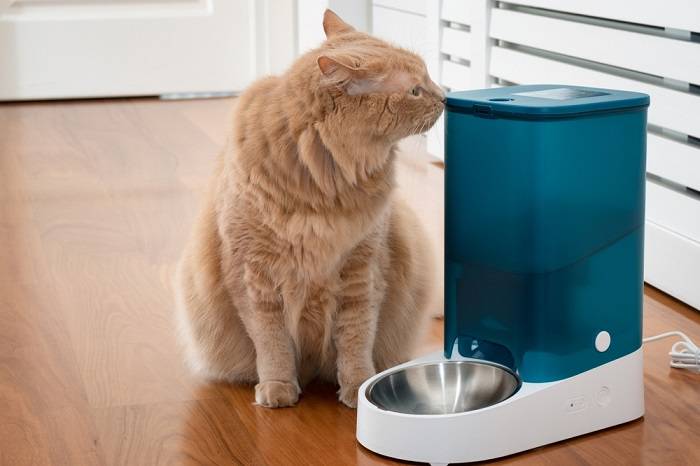
Automatic food dispensers keep food sealed away until your cat’s meal is served.
Ants are highly skilled at finding food, and one of the best defenses against these clever creatures is to keep pet food completely inaccessible. Using sealed, airtight containers prevents unwelcome invaders and has the added benefit of keeping your cat’s food fresh for longer.
Human food should also be kept locked away, rather than left out on countertops as an attractive food source that will entice ants to stick around.
Also Read: The 7 Best Automatic Cat Feeders
2. Keep It Clean
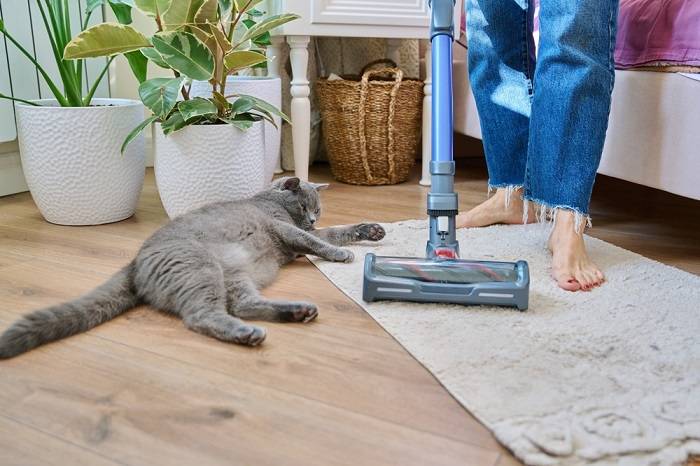
Clean up crumbs and spilled food promptly to avoid attracting ants to the area.
Your cat obviously requires their food bowls to be filled and replenished when necessary, but regularly cleaning food areas can reduce the smell and lure of food. Vacuum up crumbs regularly and lift bowls after use to wash straight away. Keep the floor of the feeding area frequently cleaned as a deterrent.
Also Read: Best Vacuum Cleaners For Cat Litter
3. Limit Access
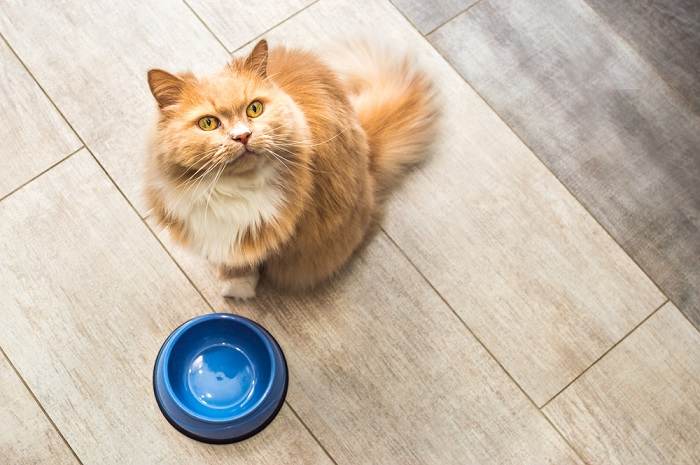
Pick up your cat’s bowl as soon as they are done eating so ants aren’t attracted to food residue.
If there is no food source, the ants won’t come. If your pet has set mealtimes and eats their food when it is put down for them, consider taking the bowls back up as soon as they have eaten. Some pets will adjust well to a consistent feeding time, but this won’t work as well if you have a cat who likes to graze at their food throughout the day.
Also Read: The Complete Feeding Guide From Kittens To Seniors
4. Change the Food Location

Moving your bowls to another location can confuse ants long enough for you to dispatch them.
Ants have complex communication systems and use a pheromone trail to guide other ants to any food they find. They tend to repeat set movements, using the same entry points and routes repeatedly by following scent trails. Changing the location of your cat’s food may provide some temporary relief whilst you work on preventing entry or dealing with the source of the problem at the ant hole itself.
If changes to the location or timings of the food bowls being available is difficult or not suitable for your home and family, these next few methods prevent the ants from accessing the bowl.
Also Read: 5 Reasons Puzzle Feeders Are Good For Cats
5. Use Sticky Tape
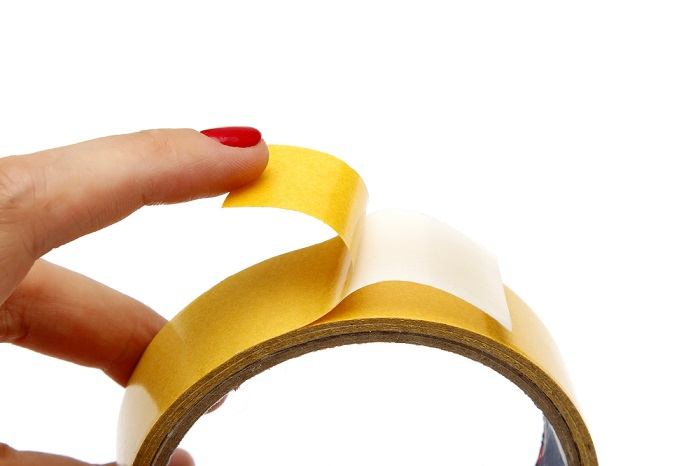
Double-sided tape around the bottom and sides of the bowl can trap ants much like flypaper.
Using double-sided tape on the outside of the cat bowls prevents ants from climbing up and into the dishes. It is worth pointing out that this method is not just an ant repellent, it can also kill ants as they stick fast to the tape and get trapped. When using tape, try and keep it low to the ground so that your cat’s whiskers do not get caught up in the stickiness.
6. Petroleum Jelly
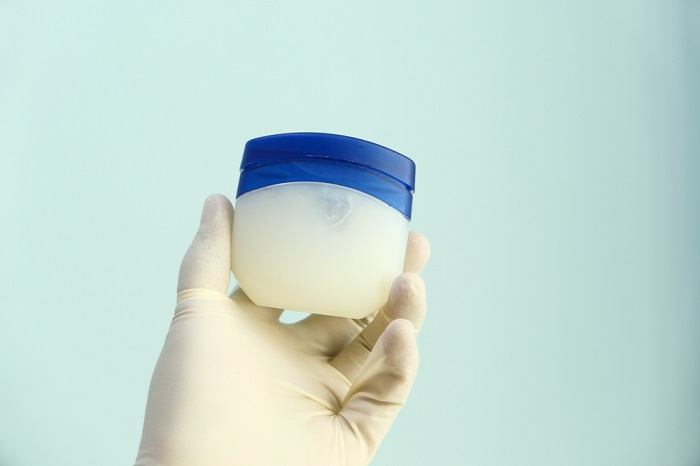
Petroleum jelly can act as a physical barrier, preventing ants from climbing up the bowl.
Petroleum jelly, such as Vaseline, spread around the edge of the bowl, can also exert effective ant control. The ants cannot cross this slippery barrier to reach the contents of the bowl.
7. Place a Moat Around the Bowl
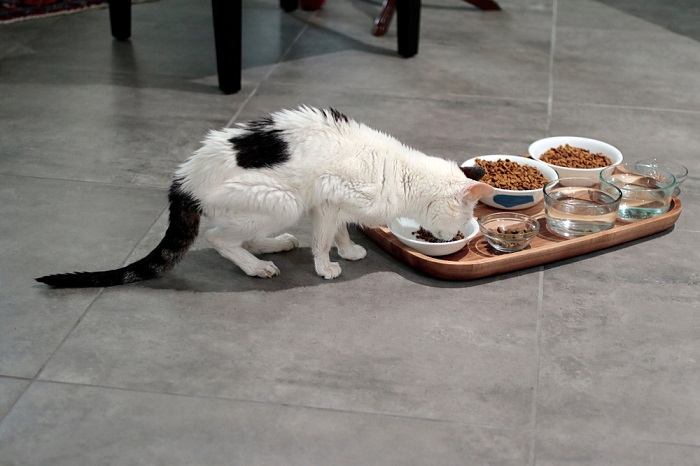
Placing bowls on a shallow tray and filling the tray with water can keep ants out.
Ants can’t swim, which makes water a very effective barrier. Place the food bowl into a larger bowl, tray, or container, in which you can put a couple of inches of water (not enough to get into the cat’s food). The ants will be unable to cross the water, but your cat can still easily reach the bowl.
It might take your pet a couple of tries to adjust to this strange new look to their bowl, but most will take their new floating feed dish in their stride!
8. Ring-Fence the Food Bowl
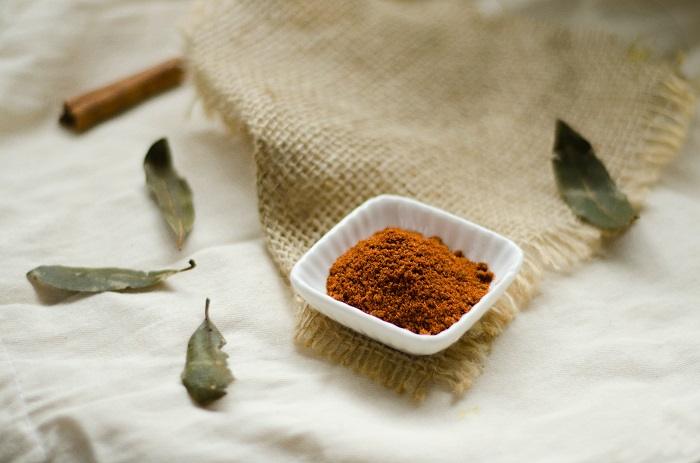
Some cat-safe substances repel ants if you sprinkle them around the food bowl.
There are various substances that ants can’t, or won’t, cross. Using these around the food will be off-putting to ants and hopefully be enough to make them retreat and seek an easier food source. Options to spread around the food bowl include chalk, baking soda, ground cinnamon, coffee grounds, or ash.
Another similar trick is to mix lemon juice and white vinegar in a spray bottle and spritz it around the feeding area.
The layer must be thick enough to be a good repellent, as ants can be tenacious creatures. It should be noted that these substances shouldn’t be toxic or repellent to cats. Options such as cayenne pepper and black pepper might be effective against ants, but might also repel your cat from their own food, which is obviously undesirable.
If your cat tends to investigate new substances, especially by tasting them, then this method might not be suitable.
Also Read: How To Switch From Wet To Dry Cat Food
9. Spraying Scents or Oils

Although essential oils do repel ants, they shouldn’t be used in areas your cat has access.
Ants seem to be deterred by certain scents and some essential oil, so spraying or sprinkling these around food bowls can be an effective repellent. Scents with apparent insect-repellent efficacy include lemon, tea tree, grapefruit, peppermint essential oil, or clove oil.
Unfortunately, essential oils are toxic to cats, so they should only be used in parts of the house your cat cannot access.
Also Read: What Scents Do Cats Hate? This List Might Surprise You
10. Insecticide
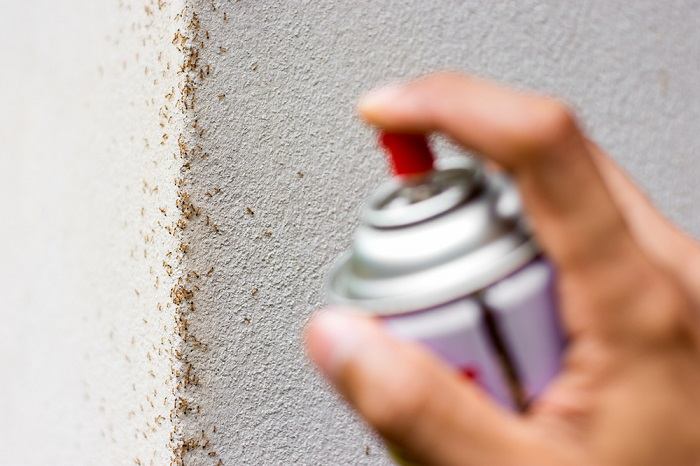
Insecticides kill ants, but they can also harm pets if not used properly, so it’s best to consult a professional.
If these more natural methods just aren’t doing the job, or you wish to tackle the entire colony rather than just repel ants from the food, you may need to look at using ant bait. This must be done very carefully, using a certified cat-safe box to hide the bait in, as these pesticides can be highly toxic to pets.
It is best to use a reputable pest control company if you are considering this option, as safety is paramount. Boiling water can be an efficient and safer way to kill ants if you can lock pets away temporarily.
Final Thoughts
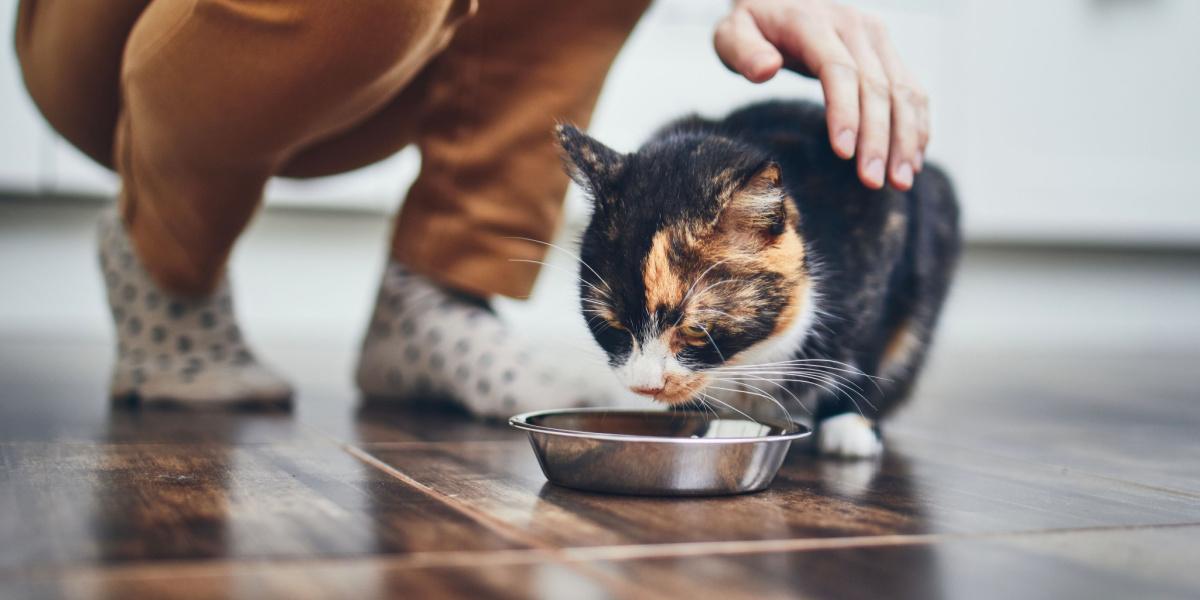
Stay on top of any signs of ants to prevent the hassle of a major ant infestation.
Having ants in the cat food is unpleasant and potentially unhygienic. Ants communicate with other ants using scent trails and can attract hundreds once a food source is found. There are various methods to repel ants. Restricting access to food, keeping food secured, and moving the food location are all helpful.
Barriers to prevent the ants from getting into the food can also be used, such as water, chalk, and other substances. Chemical insecticides can be effective, but can be a hazard to pets so must be used with caution.
Also Read: Poisoning In Cats: Causes, Symptoms, and Treatment
